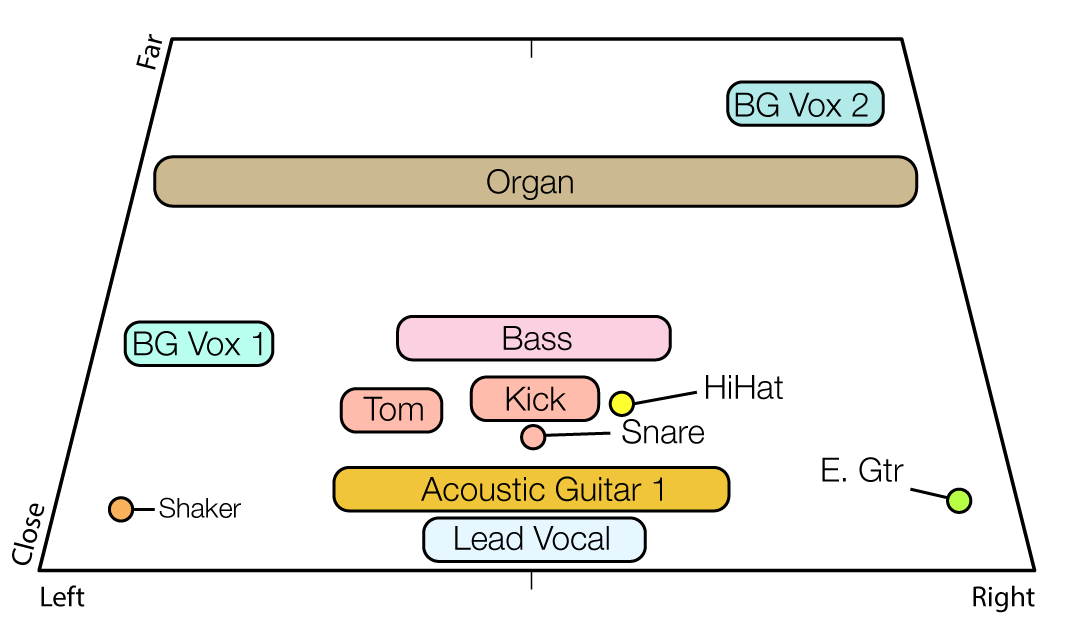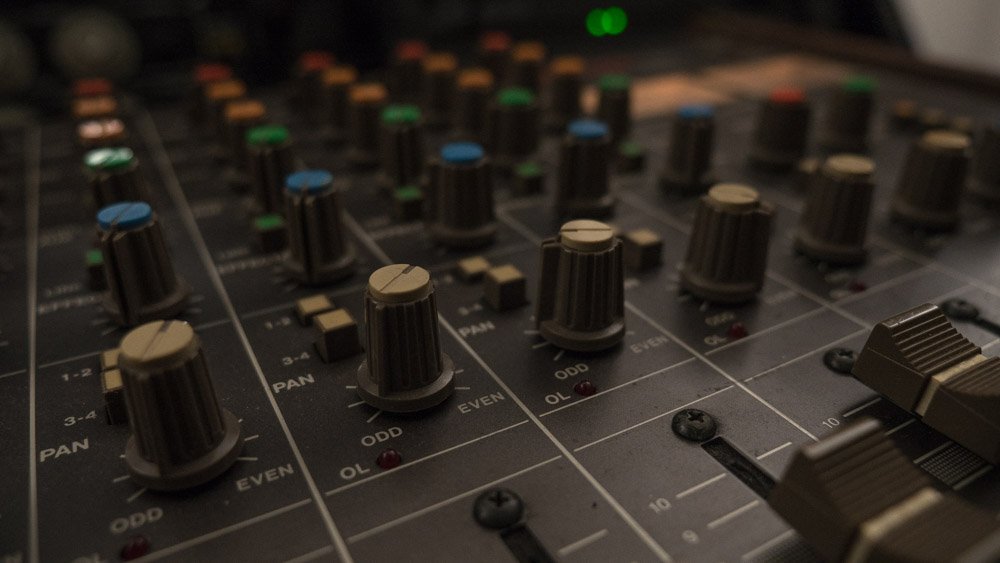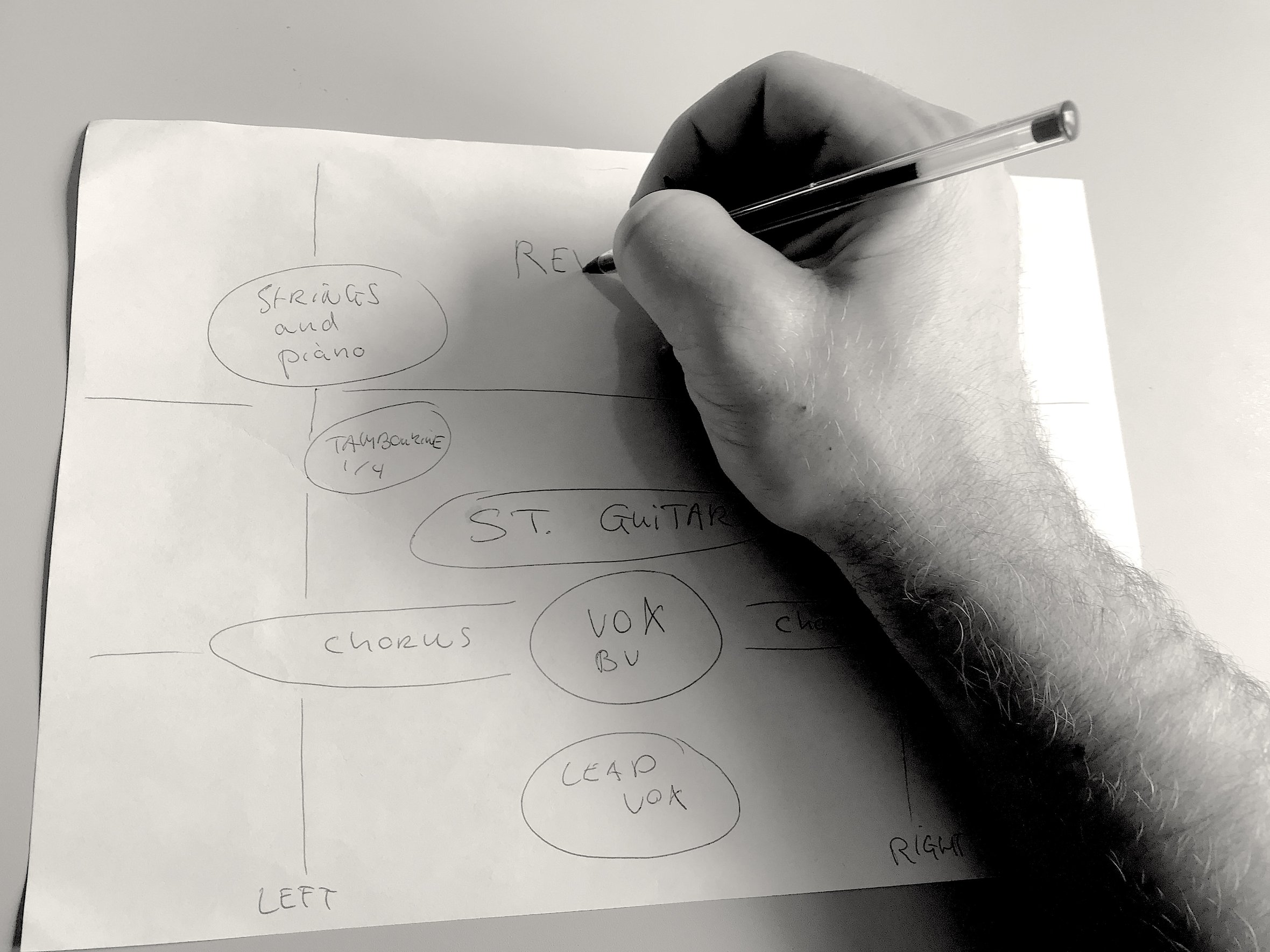When you are starting a mix, one of the best places to focus your attention is on the sound stage. The decisions that are made during this process can impact subsequent balance, panning, spectral and spatial processing gestures. Combined with effective automation, a good sound stage helps to ensure that your primary elements stand out when they need to, while being supported by the secondary elements.
Planning
When crafting a plan for a sound stage, it is not a bad idea to abstract this task from the environment of the DAW. Grab a pencil and a piece of paper (or digital equivalent) and draw a literal stage from overhead (this can be as simple as a square or rectangle). Here is a template.
You have two dimensions to work with, left/right placement and distance placement. Place the sound sources from your track on the sound stage where you think they ought be heard from. But how do we decide where they should be heard from? This exercise may bring about some interesting realizations.
An effective sound stage is like a well-composed photograph. Look for ways to establish a sense of balance, but keep in mind that balance doesn’t necessarily mean symmetry. If you place a sound source close on the left, try balancing it with something far on the right. Use contrast to create context. If you want a lead vocal to sound close and intimate, place a supporting element further away so that the listener can appreciate the difference. Keep in mind the spectrum of the different elements you are playing with. Sound sources with complimentary spectrums can be placed near to each other on the sound stage with less masking.

Use contrast to create context. If you want a source to sound close and intimate, place a supporting element further away so that the listener can appreciate the difference.
Role will likely play a part as well. Typically, lead instruments that warrant the listener’s attention will find themselves towards the front of the sound stage. However, a listener’s focus can only be on so many things at once. Not every element gets to play the lead role all the time. Leveraging volume automation can help solve this issue as well.
Panning
Once you’ve got a plan, it’s time to put it into action. The left/right placement is the easiest place to start as it has the most obvious tool; the pan pot. Built into almost every mixer (DAW or otherwise), the pan pot is a staple that most engineers will be familiar with.
Most mixing boards implement their panning by adjusting the output level to the left or right channels, but the DAW gives us more creative options via plugins: we can pan by creating a time difference between the left and right representations of a sound (delay panning), or by creating a frequency difference between the left and right representations of a sound (spectral panning). Experiment with these different methods to see what works best for you.

Distance
How to make a sound appear closer or further on the sound stage may seem like bit more of a nebulous task. To understand how to accomplish this, we need to understand how we perceive distance in our everyday lives. We do so via two primary cues, the presence (or absence) of low-level, high frequency spectral information and the ratio of direct sound to reflected sound (reverb). If we think about it, we use these cues all the time. As high frequencies with their shorter wavelengths travel through the air, they are more easily converted to friction in air than their lower frequency counterparts. Imagine how much darker the sound of someone talking from across a large room sounds then someone whispering in your ear. Similarly, the further a source is away from us, the more the reflected versions of that sound start to add up to the point at which they are as loud, or louder than the direct sound.
Armed with this knowledge, we can execute on our sound stage plan. By applying spectral and spatial processing to sounds, you can pull them closer on the sound stage or push them further away. Use this to create contrast and context in your mix. As you do, try to listen to sounds in relation to each other. Distance perception is relative, not absolute, and is based on a listener’s familiarity of a sound, and ultimately, their expectation.

Study
When developing any skill, practice is good but studying is important too. Mixing is no different. Try reverse engineering the sound stages from some of your favourite mixes. Draw the sound stage out as you hear it. This is a great exercise and you might be surprised to discover new things in some old favourite tracks.

